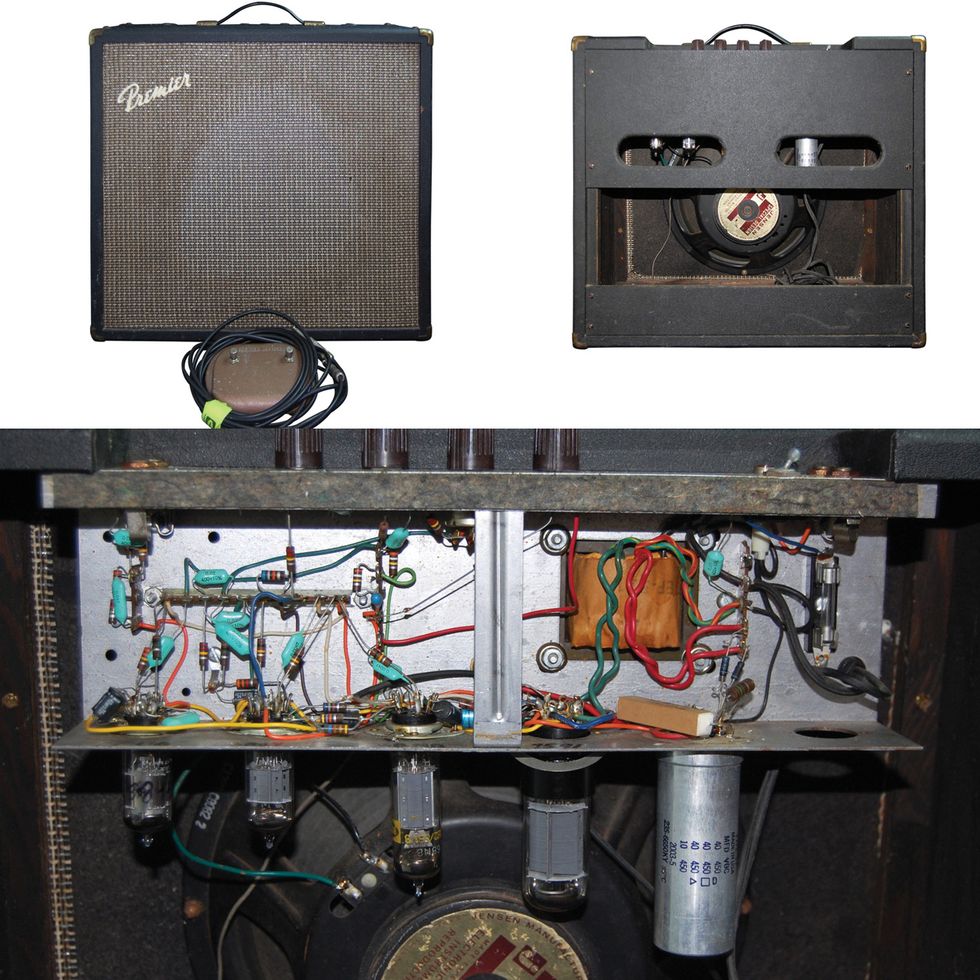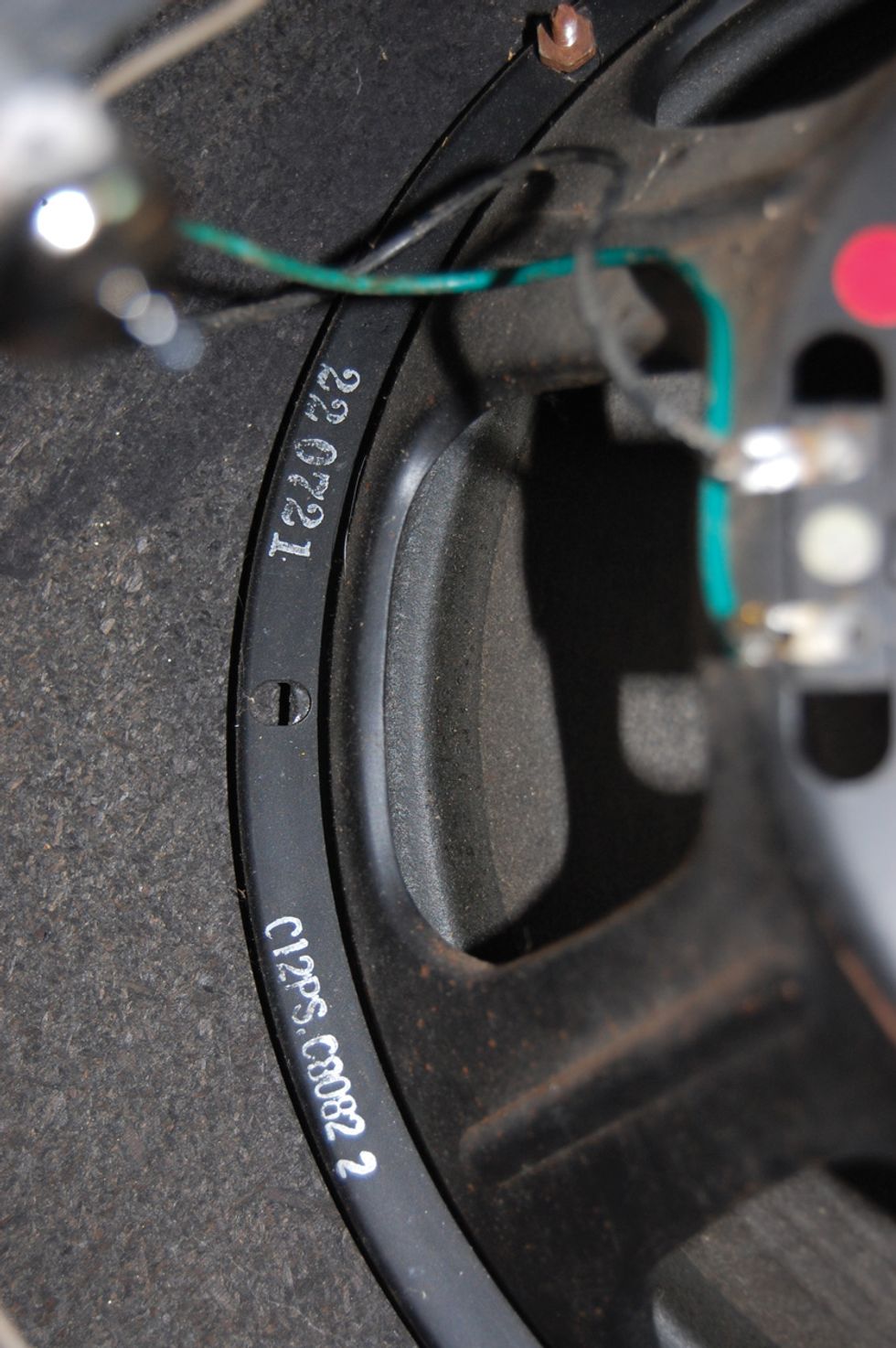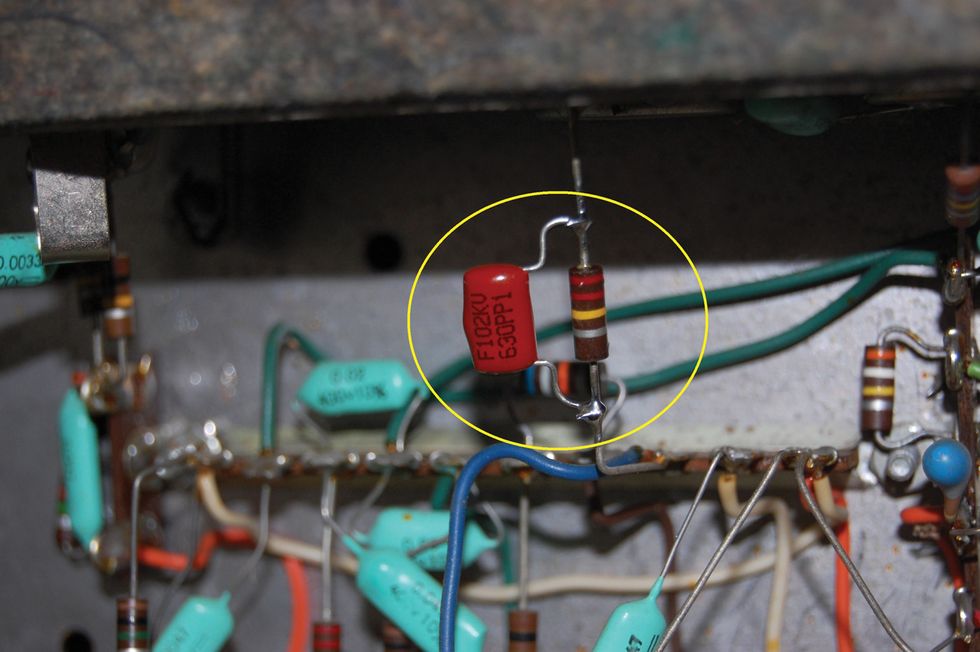Hello again, Ask Amp Man fans. Another month, another column—and another interesting amp has crossed my bench. This month it’s a cool little combo from the ’60s that’s obviously been sitting for a while and needs some TLC, so let’s take a look at this gem: a Premier G2R.
There’s not a lot of info out there about Premier amplifiers, but, from what I can gather, the brand was started by Louis Sorkin, of the Louis Sorkin Music Company of New York City, in the 1930s. Many of Premier’s amplifiers were manufactured by Multivox, which was the guitar and amplifier manufacturing division of Sorkin Music. Since Premier amplifier manufacturing began in the 1930s, but apparently Multivox wasn’t formed until the 1940s, it stands to reason that earlier Premier amps were manufactured outside of the Multivox facility. Multivox continued Premier amp production until the late 1960s.
They also built the coveted Premier 90 tube reverb unit, which was their answer to Fender’s standalone reverb. Plus, they made a line of guitars under the Premier name until the early ’70s. Also in that decade, Multivox began importing Japanese-built synthesizers and effects pedals into the American marketplace. This came to an end in the 1980s.
Multivox also brought one cool, rare, and forgotten effect to market. It was one of the first Leslie or rotating speaker effects: the LD-2, or Little David. The box’s wooden enclosure looks just like a little Leslie and it’s rumored that Stevie Ray used this in the studio back in the day. Too cool! John Mayer has been spotted with one as well. But enough for the history lesson. Let’s get to the amp.
Photo 1 — The rim of this Jensen C12PS speaker reveals its age via a date code for the 21st week of 1967.
This ’60s G2R amp is in pretty decent shape, considering it really wasn’t a high-end piece and it’s 50 years old. It does have a nice old ceramic Jensen C12PS (Photo 1) with a date code of 721 (21st week of 1967), so that right there is probably worth the price of admission! The date codes on the transformers, manufactured by Electrical Windings, are a bit skewed, but the large filter capacitor can is dated late 1966, so the amp is more than likely a 1967. It has two inputs (more on this later), a volume and tone control, and sports reverb and tremolo. And it actually has the original Premier cast-enclosure dual footswitch, which—surprisingly—has individual cables to connect to the reverb and tremolo jacks on the control panel. Crazy!
It also has a very unique tube complement. The input tube is an EF86 pentode, which was most widely used in early Vox AC15 amps and has an amplification factor almost double that of a standard 12AX7. The next tube is a 12AX7, but this is followed by a 6BN8, which is used to drive the reverb transformer. Strange that they chose this tube as the reverb driver, since they used a 6AQ5 to drive the reverb in their already existing Premier 90 Reverberation unit. But hey, gotta keep those design engineers busy, right? Anyway, the last tube in line is the output tube, and for this they chose a 7591. I guess they were looking to copy that Ampeg East Coast high-fidelity sound. Altogether this four-tube complement propelled an amp with reverb and tremolo and a supposed 10-watt output. Not bad! Let’s see what we can do with it.
Since the amp sat a while, I, of course, did the obligatory cleaning of all the jacks, pots, and tube sockets. I also slowly reformed the caps using a Variac, which is easy in this amp, because it uses solid-state (diode) rectification in the power supply. After everything was cleaned and the filter cap appeared to be fine, it was time to put the tubes back in and see if this thing made any groovy noise. And make noise it did … and not the bad kind! It had very little hum, which is great for an amp with its original power-supply filtering, and especially since it’s a single-ended amp, which can tend to hum more than a push-pull output stage.
Checking some voltages, we find 345V DC on the plate of the output tube and 6.5V DC across the 150-ohm output cathode resistor. All seems good, and doing some quick Ohm’s law math, that turns out to be a 45 mA bias on the output tube. Seems pretty good for a single-ended class A amp. Let’s plug in, turn up, and see what happens.
Photo 2 — To make the amp’s tone more guitar-friendly, Amp Man added a .001 µf capacitor in parallel with the resistor,
to pass more of the high frequencies.
At first blush, it seems everything is basically healthy. All the controls work. Tremolo functions fine and the amp has reverb for days! This has to be one of the wettest amp reverbs I’ve heard. The two inputs, however, marked “guitar” and “mic/accordion,” are not sounding any different. A quick look at the wiring and I see that the capacitor on the mic/accordion input is incorrectly wired (Right out of the factory, I might add!) and is completely out of the circuit. A quick fix of the wiring, and now that input has a bit less bottom end, which I’m sure was the intent—to remove some of the accordion’s bass frequencies from this little 10-watt, 1x12 combo.
Even with that fix, however, the amp is still a bit too dark for most guitar work. I asked the customer if he wanted the amp a little brighter (read: usable!) and, of course, he said yes. Since no schematic seems to exist for this amp and I didn’t have enough free time with it to draw one, I searched for some place in the circuit where I could add some brightness. I settled on the 220k resistor coming from the wiper of the volume control, feeding the input of the 12AX7. Trying a few different values, I settled on adding a .001 µf capacitor in parallel with the resistor (Photo 2), which would pass some more of the high frequencies. Now the amp is a bit more guitar friendly. It doesn’t have a lot of clean headroom, and the input overdrives easily due to the EF86, so the minute I plugged in, it made me play “Cinnamon Girl.” That said, I’ve heard these amps are great for harmonica, and I absolutely believe it. But as far as guitar goes, it’s now all cleaned up and ready for dirty work!

















![Rig Rundown: Russian Circles’ Mike Sullivan [2025]](https://www.premierguitar.com/media-library/youtube.jpg?id=62303631&width=1245&height=700&quality=70&coordinates=0%2C0%2C0%2C0)




